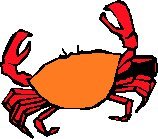 |
Crabbing along the shores of Galveston CountyBy Joe Kent - Correspondent Published October 9, 2006 I have received a number of requests from readers to delve into the art of crabbing, focusing on the beginner, and giving tips on where to go, what equipment and bait to use, and licenses required. Hopefully, the information provided in this article will get you started and open up a new, fun-filled activity for you, your family and friends to enjoy. Crabbing is one of the most enjoyable activities a family can choose for an outing. The expenses are minimal, almost every member of the family can participate, and the spots for crabbing are just about endless. The fruits of the trip are not the least of the benefits, as the family has something to enjoy at mealtime for the effort. I recall as a young child the pleasant trips my family would make to Clear Lake, Kemah, Clifton By The Sea, Galveston and other locations to crab. We always brought home good numbers of blue crab, and for some reason, they always tasted much better than those we enjoyed at restaurants. Crabbing was the start of my fanaticism for fishing, so watch out — you may become hooked on it as well. Crabbing is the sport of catching crabs using a variety of methods. The most common method is the use of a line with a piece of meat, fish head or chicken neck, the latter being the most popular bait. For the folks using bait at the end of a line, a long handle dip net is needed. Most bait and tackle shops sell prepared crabbing lines, which are equipped with a weight and a clothes pin-type device at the end to hold the bait. Dip nets also are widely available at the shops. For beginners, I highly recommend the commercial crab line, since it is fully equipped to get you started. Depending on the number in your group, I would recommend having about three lines per person. The only other equipment needed is a tub or burlap bag for your catch. The dip net and three crab lines will probably cost in the range of $12 to $15 for all four. Personnel at the bait and tackle shops can easily explain how to connect the bait, and possibly give some pointers on how to use them. Now that you have your tackle, lets find a place to use it. Fortunately, almost any pier, rock groin, or dock is a good candidate for having crabs around. Once you bait your line, you will need to secure it to something that a crab cannot pull into the water. It doesn’t take much to secure a crab line. Many crabbers prefer holding on to the line. That’s fine if you are using just one line. Once you bait and secure the line, drop it in the water. You do not have to toss the bait much past the bank or shoreline. Crabs run in very shallow water, especially to retrieve food. Now comes the technique. Watch your lines and when you notice something pulling them out, quietly and slowly start pulling it in. Have your dip net ready and again, quietly and slowly, lower the net into the water and pull the line and the clinging crab toward the net. Once you see the crab, dip it up. Crabs move much slower than fish and are easier to net. Once in the net, place the crab, assuming legal size and not a female with an orange sponge attached, in your tub or burlap bag. Keep just enough water on them to not submerge the crabs. They are quite resilient and mainly need to be kept moist and out of the sun. Submerging your catch in too much water will take its toll, as the crabs will deplete the oxygen and die. Again, the objective is to keep them moist and not submerged. If you crab in deeper water, or from an elevation too high to use lines, such as from one of the commercial piers, you will want to use a hand-held crab trap that has a line attached to the trap doors. For this type of crabbing, you secure the bait to a point in the middle of the trap and toss it in the water with the sides (or trap doors) open. Periodically, every five minutes or so, pull the trap up and check to see if crabs or fish are inside. Instead of the slow retrieve, pull the line quickly to close the doors or the catch will get away. There are many varieties of hand held crab traps, and the same bait and tackle shops mentioned earlier normally sell them. Where can you crab in Galveston County? Almost anywhere the public has access to the water. If you are looking at private property, be sure to get permission before dropping any lines. The two most likely crabs to catch along our coastline are the blue crab and the stone or rock crab. Both are excellent table fare. The blue crab has edible meat in the body and claws. The stone or rock crab has edible meat only in the claws, however only the right claw may be removed. Regulations set a minimum size of 5 inches for the blue crab, and the right claw on the stone crab must be at least 21?2 inches long. Again, only the right claw may be removed. Crabbers are under the same license requirements as other saltwater fishermen. At one time, recreational crabbers were not required to have a license. That has now changed. I hope to see “crab tournaments” in the future. Why not? What a fun way to further enjoy the sport. Capt. Joe Kent can be reached at 409-683-5273 or e-mailed at reel. report(at)galvnews.com. More about Crabs How to Clean a Crab: Click Here |